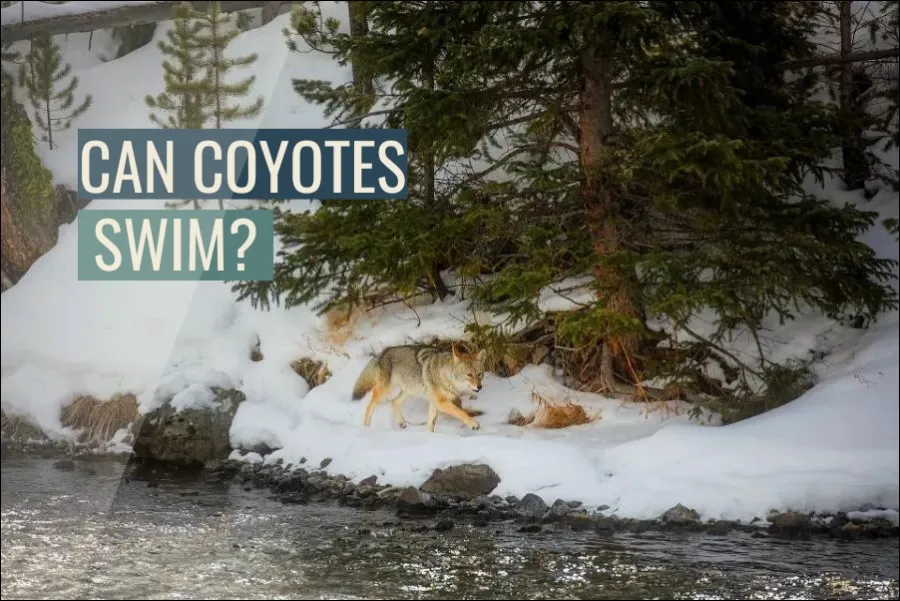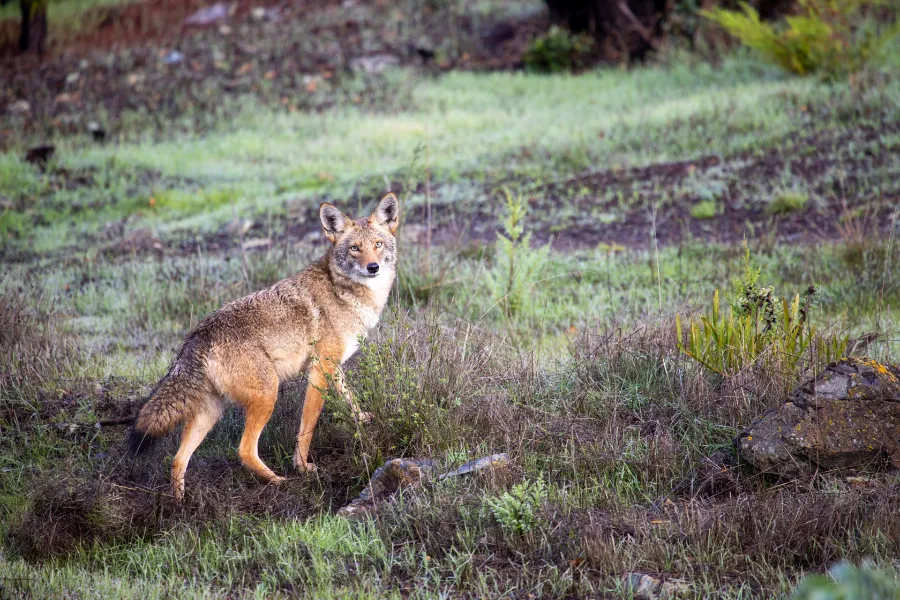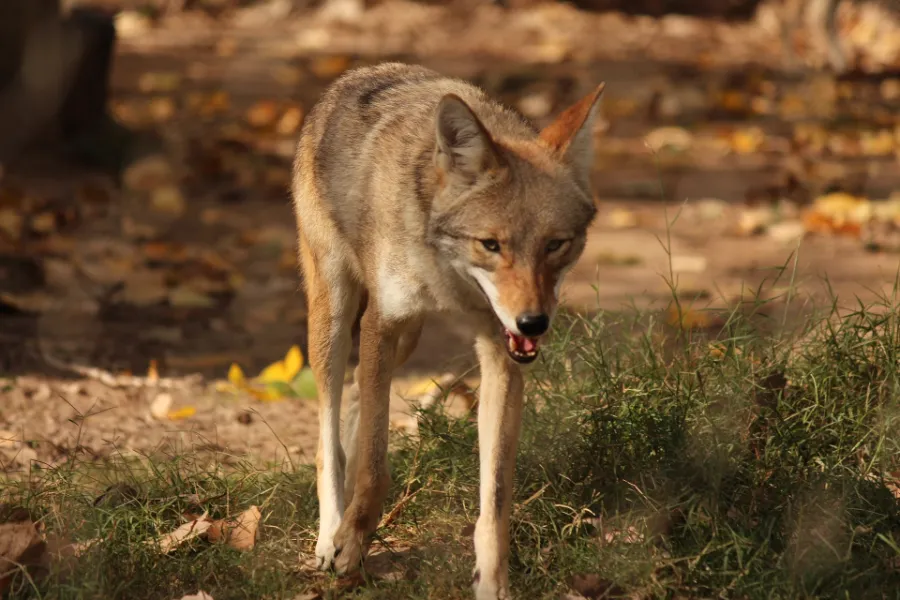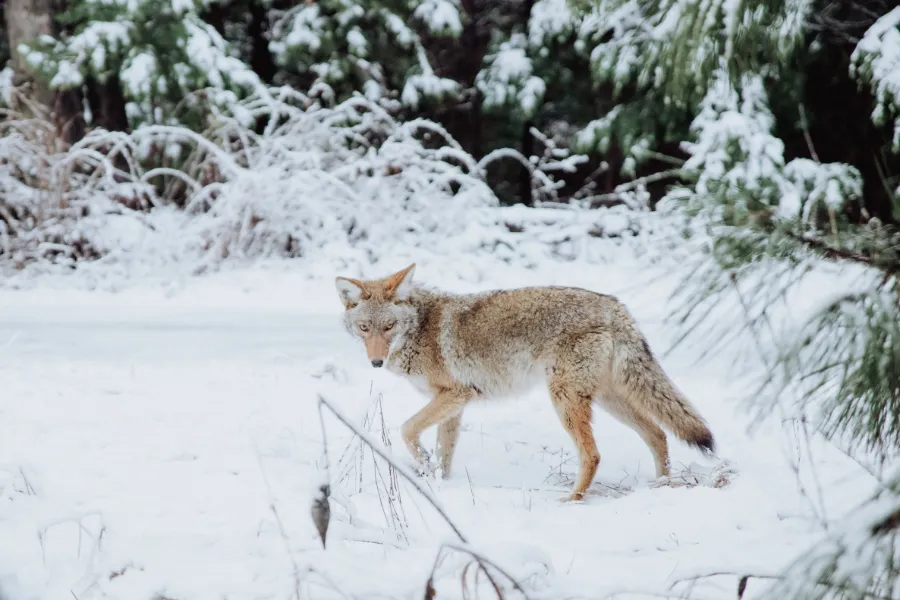
Coyotes are a common sight in many parts of North and Central America, and they are known for their adaptability and intelligence. But can these clever canids swim?
Coyotes are able to swim. They use their powerful legs and webbed toes to move through the water and are able to swim across rivers and lakes with ease. Coyotes are also known to dive underwater to catch fish and other aquatic prey.
Many people are familiar with the appearance and behavior of coyotes, but their aquatic abilities are not as well-known. In this article, we will take a closer look at the swimming skills of coyotes.
Can coyotes swim?
Coyotes are a canid species endemic to North and Central America. They are well-known for their versatility and may be found in a wide range of settings, including grasslands, woodlands, and cities. Coyotes are noted for their intellect and problem-solving skills, which have enabled them to flourish in a variety of habitats.
Coyotes’ ability to swim is one of the ways they may adapt to diverse environments. While coyotes are not as aquatic as some other canid species, such as otters or beavers, they are nonetheless capable of swimming and frequently use this ability to move or seek for food.
Coyotes are excellent swimmers and can easily traverse rivers and lakes. They navigate through the water using their muscular legs and streamlined bodies, and their webbed toes aid in their agility and mobility. Coyotes will also paddle in the water with their front paws, similar to how dogs swim.
Coyotes are known to employ swimming as a hunting method as well as a mode of mobility. They have been observed diving underwater to grab fish and other aquatic animals, use acute senses of smell and hearing to locate their prey.
While coyotes are not normally intimidated by water, they can experience difficulties when swimming. Strong currents and strong waves can be difficult for them to traverse, and if they are not careful, they may drown. Coyotes, on the other hand, are intelligent animals who can usually find their way out of unfavorable circumstances.
Overall, coyotes can swim and exploit this ability to their benefit in a number of ways. Coyotes are adaptive animals that can flourish in a variety of conditions, whether they are crossing a river to get to their objective or diving underwater to capture a meal.

The swimming abilities of coyotes
Coyotes are commonly associated with dry, land-based settings, however they may also be found in water. Coyotes are excellent swimmers and can easily traverse rivers and lakes. They navigate through the water using their muscular legs and streamlined bodies, and their webbed toes aid in their agility and mobility. Coyotes will also paddle in the water with their front paws, similar to how dogs swim. Coyotes, in addition to their swimming talents, can dive underwater to capture fish and other aquatic prey.
How coyotes use swimming in their daily lives
In their daily lives, coyotes employ their swimming ability for a number of functions. Swimming is one of the most prevalent modes of transportation for coyotes. If a coyote needs to cross a river or lake to get to its objective, it will use its swimming abilities to do it. Coyotes are also known to hunt by swimming, diving underwater to grab fish and other watery prey. In addition to these reasons, coyotes may utilize swimming to avoid predators or to cool themselves in hot weather.
The role of swimming in coyote behavior and ecology
Swimming is an essential part of coyote activity and ecology. Swimming is an important part of coyote social behavior in addition to being a crucial survival ability. Swimming may be a bonding activity for members of a coyote pack, since it has been seen that coyotes play and engage with each other in the water. Swimming can also play an essential role in the distribution and migration of coyotes within a particular ecosystem, according to coyote ecology. Coyotes who dwell in places with vast bodies of water, for example, may be more prone to employ swimming as a mode of transportation and may have distinct mobility patterns than coyotes that live in dry, land-based ecosystems.
The aquatic adaptations of coyotes
Coyotes are well-adapted to aquatic living, and they have various morphological traits that aid in their swimming ability. Coyotes have a streamlined body form that helps them to go through water with minimum resistance, in addition to muscular legs and webbed toes. Coyotes have acute senses of smell and hearing, which they may employ to track out watery prey. These modifications, along with the coyotes’ innate intellect and problem-solving abilities, allow them to be excellent swimmers and divers.

Coyote encounters with water: myth vs. reality
Many myths and misconceptions exist about coyotes and their relationship with water. Some say that coyotes are scared of water and would avoid it at all costs, while others claim that coyotes are powerful swimmers that can swim large distances. Coyotes can swim and often exploit this ability to their advantage, but they are not as aquatic as some other canid species, such as otters or beavers. Coyotes are normally wary of water and will only swim if it is required for survival or if there is a reward on the other side, like as food.
Swimming as a means of survival for coyotes
Swimming is a vital survival ability for coyotes, and they use it to satisfy their fundamental needs in a number of ways. Swimming, for example, may be used by coyotes to avoid predators or to obtain food. Coyotes are also known to employ swimming as a mode of transportation, particularly when crossing a body of water to reach their goal. In addition to these utilitarian use, coyotes may utilize swimming to cool down during hot weather or to release stress and enjoy fun. Swimming is an essential survival skill for coyotes, allowing them to flourish in a range of habitats.
How far can coyotes swim?
It is impossible to identify an exact distance that coyotes can swim since it varies based on the weather and the physical skills of the individual coyote. Coyotes are excellent swimmers and can easily traverse rivers and lakes. They navigate through the water using their muscular legs and webbed toes, and their front paws to paddle and steer. Coyotes can swim for great distances without becoming tired, as long as the water is not too choppy or the current is not too strong. Coyotes have been observed swimming over rivers many miles wide, and they may even swim across smaller bodies of water, such as ponds or streams, as a mode of transportation or to locate food.

How do you scare a coyote?
- Remove prospective food sources: Because coyotes are drawn to locations where they may obtain food, it is critical to remove any potential food sources from your property. This includes storing rubbish securely, keeping pet food indoors, and collecting up any fallen fruit from trees.
- Have fencing: Because coyotes can climb over or dig under fences, it’s critical to use a fence at least six feet tall with a buried extension to keep them from digging through. Electric fence can also be used to keep coyotes at bay.
- Make noise: Coyotes are normally afraid of humans and will frequently flee if they come into contact with them. Make loud noises and wave your arms at a coyote to scare it away. Deterring coyotes can also be accomplished by using an air horn or a whistle.
- Use deterrents: To dissuade coyotes, numerous devices are available, including motion-activated sprinklers, reflective tapes and ribbons, and predator urine. These materials can be used to create an unpleasant or uncomfortable environment for coyotes along the perimeter of your property.
- Keep pets inside: Because coyotes are known to prey on small pets, it’s critical to keep your pets indoors, especially at night. If you must allow your dogs to go outside, make sure they are monitored and on a leash.
By following these guidelines, you may assist in limiting the possibility of encounters with coyotes and keep both you and the coyotes safe. However, keep in mind that coyotes are wild creatures that must be respected and treated with caution. If you are unable to discourage a coyote or feel threatened by one, get assistance from local authorities.
In conclusion
Coyotes can swim and travel across the water using their muscular legs and webbed toes. They can swim across rivers and lakes, as well as dive underwater to collect fish and other aquatic prey. Coyotes utilize swimming for mobility and hunting, and they may also use it to avoid predators or find comfort from hot temperatures. Swimming is essential to coyotes’ survival and plays a vital role in their behavior and ecology. Coyotes have various physical adaptations that aid with swimming, including as a streamlined body shape and acute senses of smell and hearing. While coyotes are not normally harmed by water, they do experience difficulties when swimming and may die in choppy water or strong currents.
